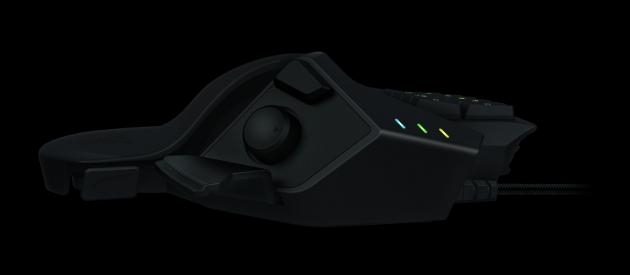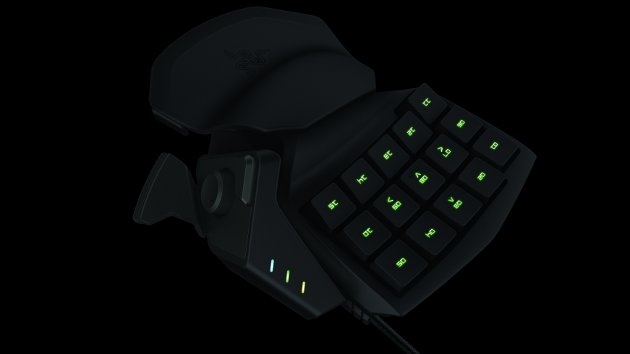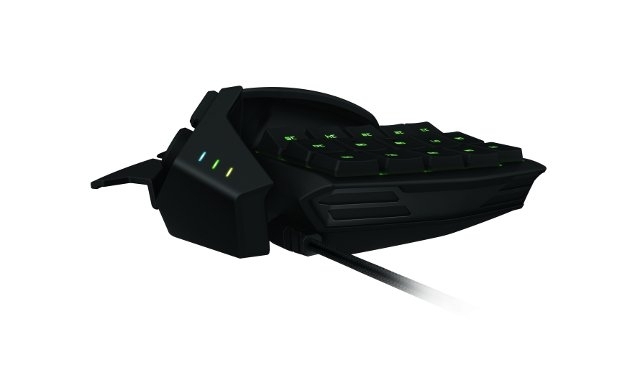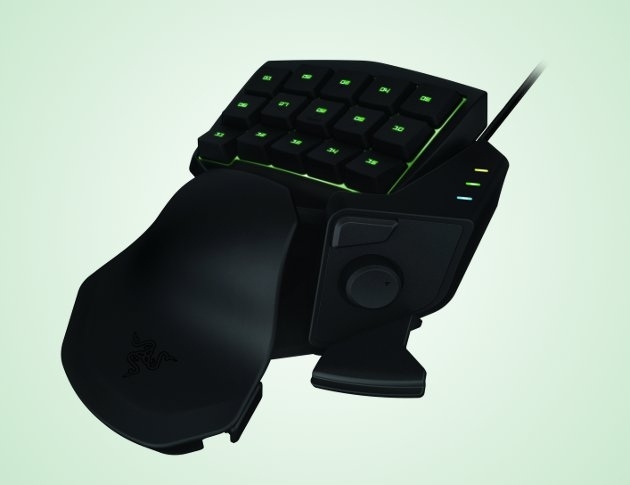Hardware Review: The Razer Tartarus
ZAM gets to grips with the new gaming keypad from Razer

I’ve never been one for gaming keypads; let me make that admission at the outset.
I didn’t understand the point of a keypad, always viewing the peripheral as both overly serious and somewhat silly at the same time—a mixture of tweed jacket and Power Glove.
With the release of the Razer Tartarus, and my research for this review, I would finally get to discover the appeal of such a device.

First off, the Tartarus is a sleek addition to any desk. Though it’s a shame there isn’t a variety of colors among the lighting options, the black sheen of the body and glowing green of the light system is undoubtedly iconic when it comes to Razer products.
Whatever my initial misgivings, the device certainly looks cool.
To take the Tartarus out for a spin, I played a few ARAMs and Summoner’s Rift games of League of Legends and, initially, I was a little bamboozled. Though comfortable on the palm and wrist—I’m a carpal tunnel syndrome sufferer so ergonomic comfort is a huge plus for me—it didn’t automatically feel intuitive.
As I usually use a mechanical keyboard, the membrane keys of the Tartarus felt spongy—which is always going to be the case with any membrane peripheral—and, combined with my frustration at getting my backside handed to me even more than usual in LoL, the Tartarus and I didn’t begin our relationship well.

Fortunately things improved dramatically as soon as I began playing with the numerous settings in the Synapse 2.0 software. I reassigned the keys—a very painless exercise—to put Q,W,E and R along the top row with my spells and recall along the remaining right column of keys, I adjusted the hand rest—just hold in the trigger underneath the unit and move the grip—and set about dominating the lanes again.
The more I played, the more comfortable it became, to the point that having my keypad in my left hand and mouse in the right—in a sort of Star Trek captain’s chair arrangement—became very natural. Reassigning more keys occurred whenever I realized in frustration I would have to reach for my keyboard as I’d forgotten something—self-cast is a bad modifier not to have handy.
The 8-direction thumb pad is probably the aspect of the unit that I have used the least so far, while the flat trigger pad below it is a nice spacebar trigger that I’ve been using extensively to remind myself that you can jump in FFXIV these days.
With 25 programmable keys and a variety of stored configurations available—with the light bars on the side panel indicating which one you are currently using, a nice touch—the Tartarus is very easy to tweak in order to fit your overall gaming style and to adapt to the particular game you are playing at any time.
Though I’m not a fan of membrane boards—once you go mechanical you can’t go back—the general ease and comfort of the Tartarus is alluring and eschewing mechanical keys means the unit costs $79.99 rather than the more expensive examples of units like the Orbweaver Stealth, which comes in at a heftier $129.99 for extra keys and more clackety clack.

I do think the price point and the functionality of the Tartarus keeps it in the category of niche product, but it is quite surprising how often I’ll find myself playing a game with it without even thinking about the choice of keypad or board.
The Tartarus won’t be to everyone’s taste, but I’m finding more and more that it may be to mine.
Scott "Jarimor" Hawkes, Editor in Chief
Follow me on Twitter @Jarimor